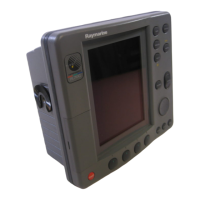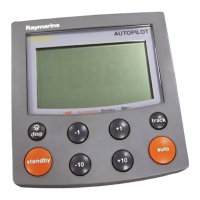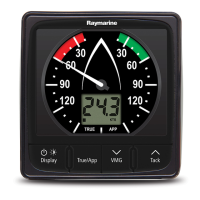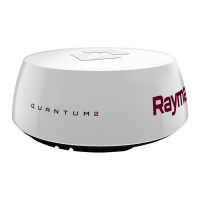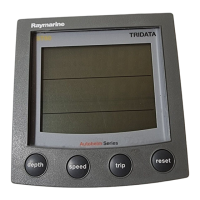Chapter 8: Installation 8-27
SeaTalk® and NMEA
In
NMEA 0183
The NMEA 0183 Data Interface Standardwas developed by the National
MarineElectronicsAssociationofAmerica.Itisaninternationalstandardthat
enables equipmentfrom many differentmanufacturersto be connected
together and to share information.
The information is passed in “sentences”, each of which has a three-letter
sentence identifier. When you check to see if one item will “talk” to another,
make surethat the two items both use the same sentence identifiers.For
example:VTG carries Course and Speed Over Ground data; GLL carries
latitude and longitude; DBT carries waterdepth; MWV carries relative wind
angleand wind speed data.
TheNMEA0183standardcarriessimilarinformationtoSeaTalk.However,it
has theimportantdifferencethat one cable will only carry informationin one
direction.For this reason NMEA 0183 is generally used to connect a data
receiverand a transmitter together: for example, a compass sensor
transmitting heading to a radar,or a GPS sensor (or Chartplotter) transmitting
positionand navigation data to a radar.
NMEA Input Connection
The two NMEA/Power input connectorsare normally used for non-SeaTalk
Compass (heading)data or GPS. It can also be used for additional navigation
data(if not provided via SeaTalk).
Connect the input(s) to the orange and yellow wires (Channel1) and/or the
greenand blue wires (Channel 2). Refer to Power and NMEA Input
Connection on page 8-14 for further details.
For example,to connect a Raymarine HeadingSensor to the NMEA
Channel 1input, connect the cables and power supply using a suitable
connectorblock,as shown in the diagram below. If installed, it may be
convenientto connect the power to the SeaTalk auxiliary junction box
describedin the following section.
Figure 8-16: NMEA Input Connection
+12 V
0V
+ NMEA Data (orange)
-- NMEA Data (yellow)
D3604-1
Red
Black
Yellow
81186_3.book Page 27 Thursday, August 22, 2002 8:23 AM
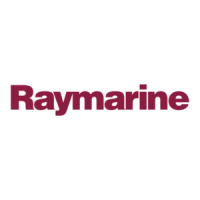
